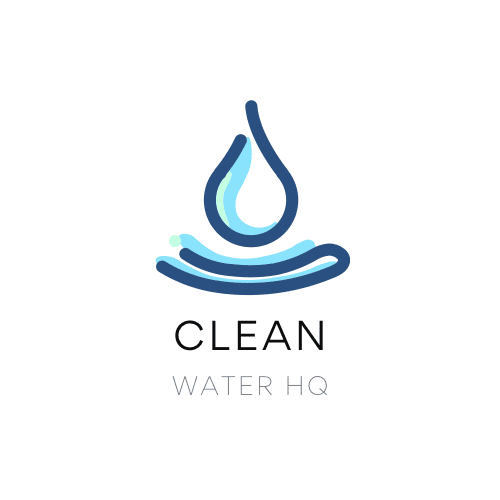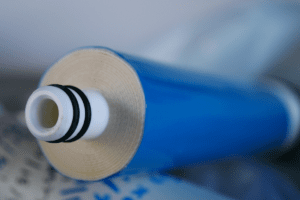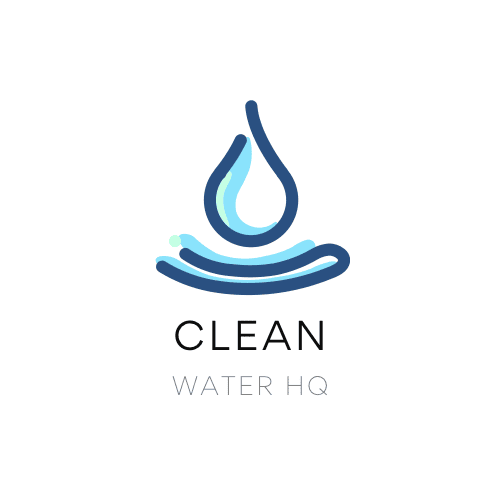A reverse osmosis system will remove contaminants of a much smaller diameter than a traditional carbon filter. Are you dealing with arsenic, lead, pesticides, tiny dissolved solids, and chemical residues? If so, there really is no substitute.
The downside of RO systems is that they also waste a lot of water.
RO water waste can be expensive, especially if you’re creating it at scale. And it doesn’t do any favors to the environment either.

How Much Water Does RO Waste?
Many of the published claims you’ll find about reverse osmosis waste water are now dated. Over the years, RO systems have grown continuously more efficient.
Many older systems create 5 gallons of wastewater for every 1 gallon of clean water they produce. Newer models have improved greatly. Several modern systems produce 3-4 gallons of pure water for every 1 gallon of wastewater.
That’s a dramatic improvement.
We call the clean water to wastewater ratio the “efficiency ratio.”
Here’s a look at the efficiency ratio for several popular modern systems,
| System | Efficiency Ratio (Clean/Waste) |
| Waterdrop G3 P800 | 3:1 |
| AquaTru | 4:1 |
| NU Aqua Efficiency Series | 2:1 |
| Waterdrop K6 | 2:1 |
| Aquasana OptimH20 | 1:3 |
| Crystal Quest 1000CP | 1:3 |
| Home Master TMHP HydroPerfection | 1:1 |
Looking for a “water efficient” system?
The EPA qualifies a ratio of 1:2.3 (or better) as efficient.
Soon to be released, the agency is working on a special label called WaterSense. Once launched, this label will quickly identify products that meet this standard. If every RO system sold met this certification, it would save 3.2 billion gallons of water in the US each year.
Why Does Reverse Osmosis Create Water Waste?
Inside an RO system, water is forced across a semipermeable membrane. Only the tiniest particles can pass through, usually .0005 microns or smaller.
Larger particles, the ones you’re trying to remove, are rejected and build up on the surface of the membrane. Periodically they need to be “flushed” so the membrane doesn’t get totally clogged.
The flushing process is what creates wastewater.
In most cases, this water would still be considered potable if you’re on a municipal water system. But it does have a high concentration of contaminants.

How To Minimize Waste
Use a new efficient system to create 1 gallon of pure water daily, and you’re likely to generate 100 gallons of wastewater yearly.
The waste may be much more if you’re using an older, less efficient system.
It is worth noting that most wastewater is still, technically, potable. Even so, you probably don’t want to drink it.
Fortunately, there are ways to minimize your waste and put the wastewater you create to good use. Here are a few tips,
Use A Modern System
I’ll say it again – modern RO systems are much more efficient than their predecessors.
Use a new efficient system to create 1 gallon of pure water every day, and you’re likely to generate 100 gallons of wastewater each year.
Compare that with an older, less efficient system with a 1:5 efficiency ratio. To produce 1 gallon of pure water daily, you’d create 1825 gallons of wastewater per year.
That’s nearly 20x more waste using an older, less efficient system!
Recycle It
There are a lot of great uses for RO wastewater other than pouring it down the drain. It’s not difficult to collect it in a storage basin or plumb it into your other appliances.
For example, there’s no reason not to flush your toilets with RO wastewater if you generate enough.
Many people use it to pre-soak their laundry or mop the floors. And in some cases, reverse osmosis waste may be suitable for watering plants or a garden. Wastewater has a higher concentration of minerals that some plants need to survive.
Proper Water Pressure
Reverse osmosis systems need sufficient water pressure to work efficiently. Ideally, most systems should operate around 40 PSI. If your water pressure is lower, your system will use more water to function properly.
Most municipal water systems provide enough pressure to operate an RO system successfully. If you find lower water pressure in your system, check if you have a pressure regulator on your water supply line. Adjust appropriately.
Maintain Your System
Most reverse osmosis systems are built with multiple stages and a filter between each stage. Clean and replace all of the filters in your system at the manufacturer-recommended interval.
Old filters will become clogged with sediment over time. Clogged filters function poorly and ultimately create more water waste.
FAQs
Do all reverse osmosis systems wastewater?
Some reverse osmosis systems claim to waste zero water, but wastewater purging is a core function of all systems. All RO systems create wastewater.
How much water is wasted during reverse osmosis?
Some older systems waste 20 gallons of water for every gallon of pure water created. Fortunately, newer systems are much more efficient. Many options produce less than 2 gallons of waste for every 1 gallon of pure water. And the most efficient systems only waste a single gallon for every 4 gallons of purified water.


